Sainz, sealed, delivered.
F1 Manager 23 review
Let’s begin with 2023’s most significant addition, ‘Race Replay.’
Disappointing then that Frontier gated twelve quirkier scenarios behind the Deluxe Edition.

You’ll mainly spend your time in career mode.
I do wish more time was spent on those driver character models.
Regardless, I sought a challenge that isn’t outright punishing, so I picked McLaren.

Every team’s board matches expectations with real-life performance like regular points or podiums.
Daily management remains essentially unchanged and it usually works well.
You won’t micromanage everything but you must decide where the team’s focus is.
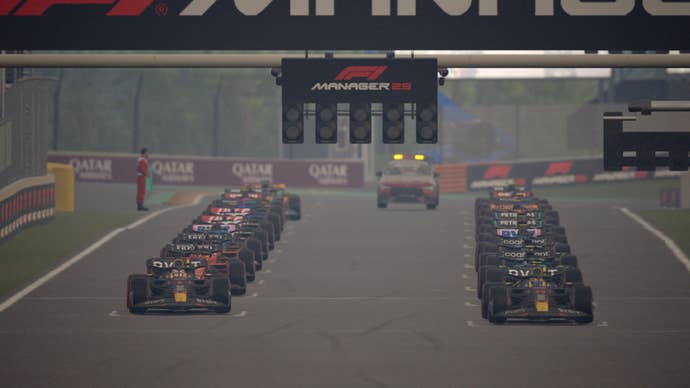
Alongside keeping team morale high, team principals must negotiate existing contracts or sign new staff and drivers.
Contract talks can become tedious as current staff members will try pushing for much higher wages.
More power to them but in-game, that leaves negotiations feeling drawn out.
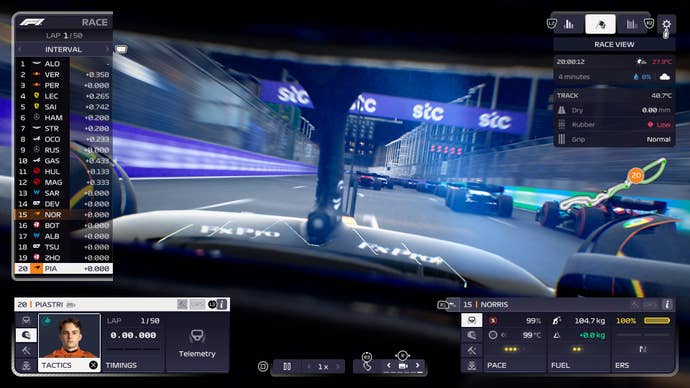
Patience gradually depletes with repeatedly rejected offers, too.
It’s a gamble though as failing those incurs a small fee.
There are some smaller tweaks worth noting that make for useful, if not game-changing improvements.
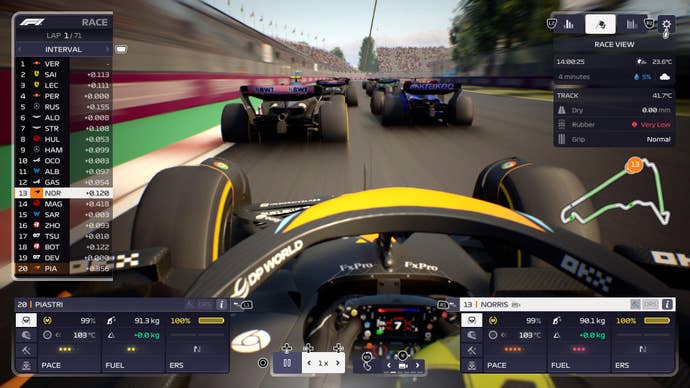
Every staff member now has a development focus for honing individual aspects, such as pace or race strategy.
Once everything’s prepared, it’s time for race weekend.
That usually splits between three practice sessions, qualifying and the main race.

Notably, F1 Manager 2023 introduces sixsprint racesthat alter a selected weekend’s format.
Matching the 2022 season rules, our final result determines the main race’s grid positions.
Two separate qualifying sessions in a row would feel tedious, so I’m fine with this omission.
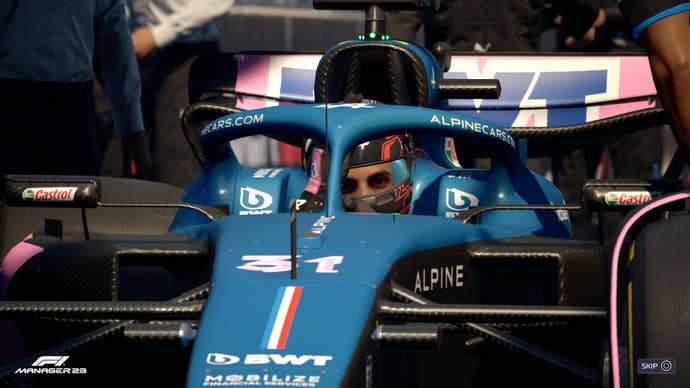
you might skip practice or qualifying to let it automatically simulate, but I wouldn’t recommend it.
Manually tweaking your cars after practice can ensure higher performance from each driver’s setup.
When the lights go green, your job involves tactically ordering both drivers across three key areas.

Tyre degradation relates to driver aggression and reacts more realistically than in 2022.
Overheating tyres degrade faster, but getting too cold risks losing grip.
Finally, electric boosts using ERS (Energy Recovery System) can kill the gap with nearby cars.
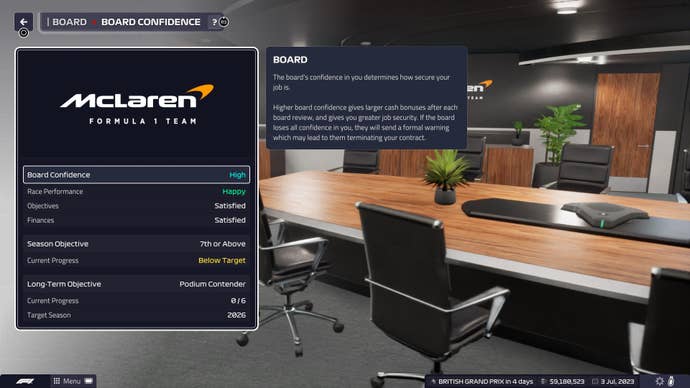
Effective at boosting lap times, yet best used in moderation as a drained battery can leave drivers vulnerable.
You’ll also need to pay close attention to your pit stop strategy.
Unless it rains, every driver must use two different tyre compounds before a race ends.
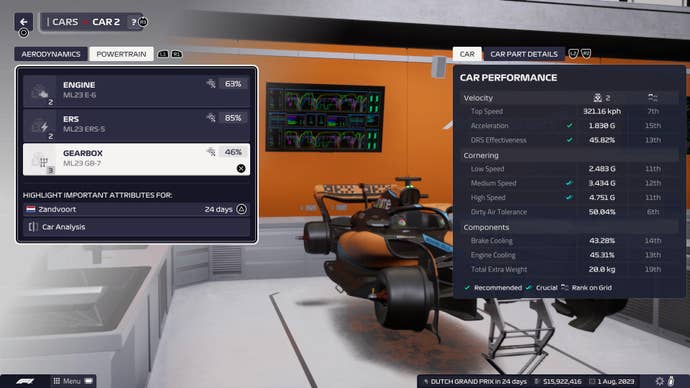
Making the right strategy call with tyre degradation versus adding another lengthy pitstop is particularly pleasing.
That gives the impression that every decision counts in gaining or maintaining that competitive advantage.
Unsurprisingly for an annual series, races play out similarly to last year.

Still, F1 Manager often succeeds at recreating that race day excitement.
The new Driver Confidence system works well.
A driver’s mood improves with overtakes but decreases when incidents occur or they get overtaken.
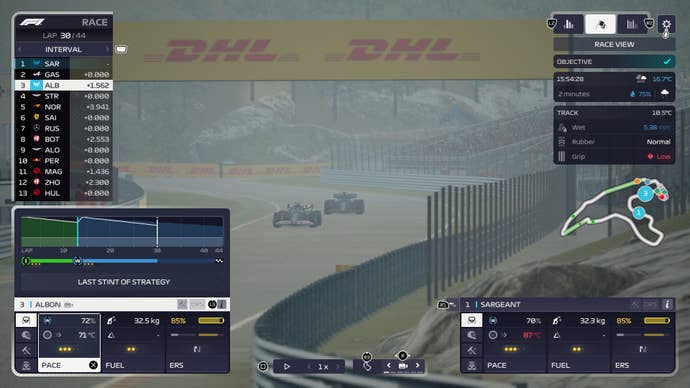
It’s a realistic touch as lower confidence risks errors.
I can’t imagine anyone feels particularly motivated in 18th.
F1 Manager 23 accessibility options
Practice and qualifying sessions can be automatically managed.
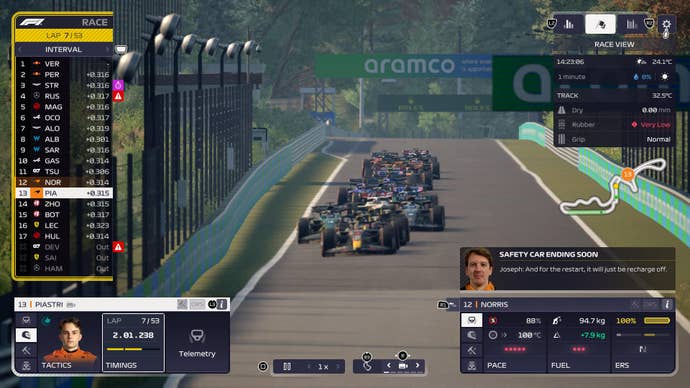
Races can be paused or played at up to x16 speed.
Independent sliders for music, commentary, sound effects, engine volume, and team radio.
Screen brightness is adjustable.
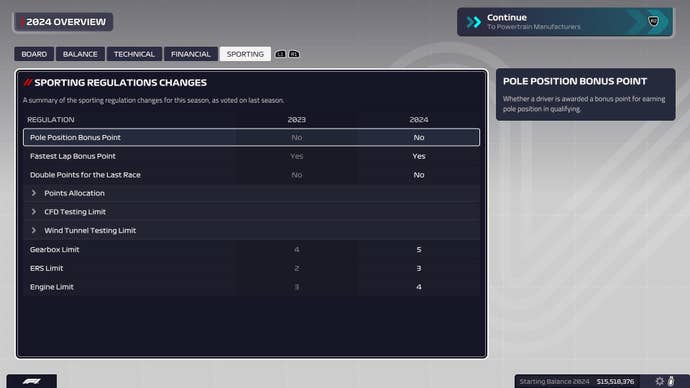
Subtitles can be enabled.
Background noise during conversations can be muted.
Colourblind-friendly interfaces are available for Deuteranopia, Tritanopia, and Protanopia.
Some UI elements can be hidden or brought up mid-race.
Optional tutorials are available.
Accidents that typically retire cars, like spinning into a wall, frequently don’t.
Many drivers simply carry on racing after a brief pause with minor damage.
Unrealistic damage visuals don’t help, often looking more like a scattering of pixels than vehicle debris.